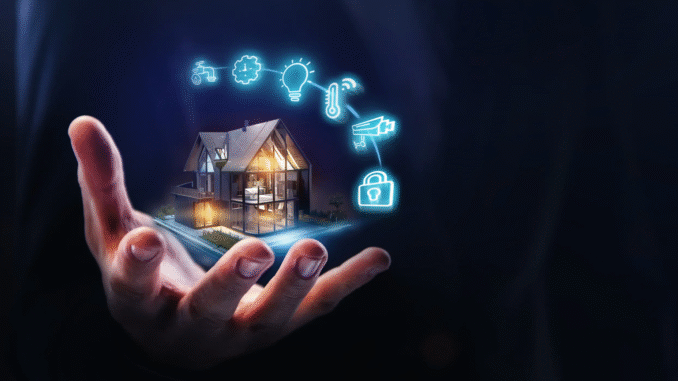
Smart Homes in 2025: Gadgets, Security, and the Future of Living
In 2025, the idea of a “smart home” is no longer a futuristic fantasy—it’s fast becoming the new standard of modern living. From voice-activated assistants and AI-powered appliances to smart security and energy management systems, our homes are evolving into intelligent environments that cater to comfort, safety, and efficiency.
With rapid advancements in the Internet of Things (IoT), artificial intelligence, and connectivity, smart homes are reshaping not just how we interact with our living spaces but how we live, work, and thrive within them.
In this article, we explore the smart home revolution in 2025, including the most innovative gadgets, the latest in home security, and how technology is defining the future of residential living.
What Is a Smart Home in 2025?
A smart home uses connected devices, sensors, and software to automate and control home systems—such as lighting, heating, entertainment, and security—often through voice commands or smartphone apps.
While early smart homes focused on convenience (e.g., turning lights on with an app), today’s systems emphasize efficiency, personalization, and proactive intelligence. In 2025, the average smart home is integrated, learning your preferences over time and adjusting systems to fit your lifestyle seamlessly.
Key Technologies Powering Smart Homes
1. Internet of Things (IoT)
IoT connects devices and appliances to the internet, allowing them to communicate and operate together. In 2025, IoT technology is faster, more secure, and highly scalable.
2. Artificial Intelligence (AI) and Machine Learning
AI-powered systems analyze user behavior and automate actions. For example, a thermostat might learn your preferred temperature patterns and adjust automatically.
3. 5G Connectivity
With ultra-low latency and high bandwidth, 5G ensures faster, more stable communication between smart devices, enabling real-time responsiveness.
4. Voice Assistants and Natural Language Processing
Voice-activated systems like Amazon Alexa, Google Assistant, and Apple’s Siri are now more conversational and accurate, making smart home control more intuitive.
Top Smart Home Gadgets in 2025
The gadget ecosystem in smart homes has expanded significantly. Here’s a look at the most innovative and widely adopted devices shaping the modern home:
1. Smart Hubs and Voice Assistants
Smart hubs are the central control systems of connected homes. Newer models support multilingual interactions, respond faster, and integrate with more devices.
Popular devices:
- Google Nest Hub Max
- Amazon Echo Show 15
- Apple HomePod with Matter support
2. Smart Lighting Systems
LED bulbs and lighting panels now adjust automatically based on natural light, time of day, or activity. Custom color settings, circadian rhythm lighting, and motion sensors are standard.
Key brands: Philips Hue, LIFX, Nanoleaf
3. AI-Driven Thermostats
Smart thermostats now use AI to learn occupant patterns, monitor energy usage, and even suggest adjustments to save on bills.
Top picks: Nest Learning Thermostat, Ecobee SmartThermostat, Honeywell T9
4. Smart Appliances
From ovens that cook based on voice instructions to refrigerators that track expiration dates, kitchen tech is smarter and more connected than ever.
Examples include:
- LG InstaView Refrigerator with AI camera
- Samsung SmartThings Cooking Assistant
- Bosch smart dishwashers with remote diagnostics
5. Smart Mirrors and Health Gadgets
Smart mirrors now feature fitness apps, skin analysis, and voice-controlled media. In-home health monitors track vitals, sleep patterns, and activity.
Trending in 2025:
- HiMirror for skincare insights
- Mirror.co for workouts
- Withings smart scales and health monitors
6. Robot Assistants
Beyond robotic vacuums, smart homes now feature multi-functional robot assistants that handle cleaning, security patrol, item retrieval, and elderly care.
Popular options:
- iRobot Roomba Combo
- Amazon Astro
- Samsung Ballie personal assistant
Home Security in Smart Homes
Security is one of the most vital components of smart homes. In 2025, security systems are proactive, AI-powered, and deeply integrated with the rest of the home.
1. Smart Doorbells and Cameras
Video doorbells and smart cameras now feature facial recognition, package detection, and license plate logging.
Popular brands: Ring, Arlo, Google Nest Cam
2. AI-Powered Monitoring
Systems analyze activity patterns to identify potential threats—such as unusual movement or unfamiliar faces—and send real-time alerts.
Example: Deep Sentinel uses AI guards to detect and deter intruders.
3. Biometric Access Control
Forget keys—door locks now use fingerprints, retina scans, or voice recognition for secure, convenient access.
Leaders: Lockly, August, Ultraloq
4. Environmental Safety Systems
Smart smoke detectors, gas sensors, and water leak monitors offer instant notifications and can automatically shut off utilities in emergencies.
Key devices: Google Nest Protect, Honeywell Wi-Fi Water Leak Detector
Energy Efficiency and Sustainability
Smart homes in 2025 are designed not only for comfort but also for sustainability. As energy prices rise and climate awareness grows, homeowners are turning to eco-friendly technologies.
1. Smart Energy Management
Integrated systems track electricity, gas, and water usage, offering insights and recommendations for reducing consumption.
Features include:
- Automated power-saving modes
- Peak usage alerts
- Solar panel integration
2. Smart Plugs and Outlets
Control and monitor energy usage for individual devices. Some systems can detect vampire power drain and cut power when devices are idle.
Top products: TP-Link Kasa Smart Plug, Eve Energy
3. Smart Irrigation Systems
AI-controlled sprinklers use weather data and soil sensors to optimize watering schedules, reducing waste.
Examples: Rachio 3, Orbit B-hyve XR
Home Automation and Integration
The future of smart living is not just having gadgets—it’s how those gadgets work together. In 2025, interoperability and automation are essential.
1. Matter Protocol
The Matter standard, supported by Apple, Amazon, Google, and others, ensures that devices from different brands work seamlessly together.
2. Scenario-Based Automation
Home systems now execute routines like:
- “Good Morning”: Opens blinds, plays music, adjusts thermostat.
- “Away Mode”: Arms security, turns off lights, adjusts climate.
- “Movie Night”: Dims lights, lowers blinds, launches streaming service.
3. Predictive Automation
AI systems anticipate needs based on behavior and environmental data. For example, if you usually return from work at 6 p.m., the lights and heater turn on just before you arrive.
Challenges and Concerns in Smart Homes
While smart homes bring innovation, they also present challenges that homeowners must navigate:
1. Privacy and Data Security
With multiple devices collecting personal data, cybersecurity is a major concern. In 2025, smart homes require:
- Encrypted data transmission
- Two-factor authentication
- Regular firmware updates
2. Cost and Accessibility
While prices are falling, high-end smart systems can still be expensive. However, more affordable DIY options and government incentives are increasing accessibility.
3. Interoperability Issues
Despite progress with standards like Matter, not all devices work together seamlessly. Homeowners may need to invest in bridges or compatible ecosystems.
4. Digital Dependence
Overreliance on smart systems can become a problem during power outages, connectivity issues, or tech failures. Backup systems and manual overrides are essential.
The Future of Living: What to Expect Next
Looking ahead, smart homes will continue evolving in several exciting directions:
1. AI-Driven Personalization
Homes will become more intuitive—adjusting lighting, music, scent, and ambiance based on your mood and biometrics.
2. Decentralized Home Networks
With increasing privacy concerns, decentralized home data storage using blockchain may become more mainstream.
3. Voice-Only Interfaces
Advancements in natural language processing may eliminate the need for apps entirely—making homes controllable via conversation alone.
4. Home-as-a-Service (HaaS)
Subscription models may offer smart home bundles including installation, maintenance, and software updates—making advanced systems accessible to renters and homeowners alike.
Conclusion
In 2025, the smart home is not a luxury—it’s a lifestyle. From AI-powered appliances to robust security and energy management, these intelligent systems are redefining what it means to feel comfortable, safe, and in control of your living environment.
As technology continues to evolve, smart homes will only become more intuitive, accessible, and essential. Whether you’re an early adopter or just starting to explore, the future of living is already at your doorstep.

